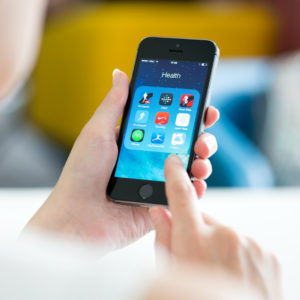Many advances in 21st-century healthcare will emerge from small organizations. Digital technologies will enable individual innovators to conquer pain, disease and despair. Insights will arc from other industries. Patients will manage their own health and healthcare as never before.
Healthcare innovation is beginning to resemble the information technology revolution that transformed life on this planet over the last 25 years — how we work, play, shop, communicate, relax, learn and travel. Long-established companies like IBM and government programs like ARPANET set the stage for IT’s transformation. But society-altering innovations came from small, wildly competitive enterprises. Firms like Apple, Blackberry, Amazon and Facebook began in garages, basements and dormitories. Some startups became huge. Others vanished.
Similarly, innovation to improve health and push costs down won’t come solely (or even primarily) from large, established organizations — governments, hospitals, insurers, pharmaceutical companies. Small, new, sometimes fleeting organizations will develop new devices, explore the human genome, and help patients manage or avoid illness.
Personal inspiration, expertise from outside health care, digital technology, self-management of health — coalesce in a small startup called myStrength Inc. The company offers self-managed mental health tools for individuals with depression, anxiety, stress, substance abuse and chronic pain.
Like many entrepreneurial stories, myStrength’s history is deeply rooted in its co-founders’ biographies. As a younger executive, Scott Cousino struggled with depression. Not wishing to be stigmatized at work, he sought help on a self-pay basis outside his employer’s health plan. His co-founder, Matt Sopcich, lost his brother to suicide.
Neither Scott nor Matt had healthcare backgrounds. Scott ran a for-profit online university. Matt was an engineer and e-commerce leader with a telecommunications company. Both had personally experienced the effect of emotional health issues. Both had seen the financial and personal costs of employees’ behavioral health challenges. In 2011, over beers, the two discussed depression’s effects on company productivity. They explored how their expertise in online learning and web technology might enable them to tackle behavioral health on a large scale. Sketched on a cocktail napkin, their ideas became myStrength in 18 months.
During his own recovery, Scott maintained meticulous notes on activities and routines that helped him overcome depression — often developed from interactions with his therapist. His briefcase carried a manila folder titled “Hope,” filled with family pictures, encouraging quotes and inspiring pictures. This folder provided daily support between monthly visits to therapists. Years later, the contents of that folder, transformed by technology, formed the starting point for the myStrength app, which supplemented this initial base with thousands of activities drawn from practices, academic research and clinical experience.
Suzanne Falaschetti of myStrength explains how the site’s learning engine works: When patients first subscribe to myStrength, they complete a short assessment to determine areas of need and level of motivation. Then, artificial intelligence kicks in. Just as Amazon’s AI can predict your tastes in books and music, myStrength’s learning engine suggests which e-learning modules, videos, lesson plans and activities might help particular patients stave off or overcome behavioral problems.
Drawing on evidence garnered from the world of therapeutics, myStrength overlays and constantly updates information on the individual user, adjusting in real-time the suggestions, queries and metrics provided to that patient. According to Falaschetti, the more the patient uses the app, the better it can address that patient’s needs. She notes, for example, 80 percent of the 60,000-plus subscribers want spiritual-related content as part of their therapy. So the app asks users for their religious beliefs (if any) and provides appropriate inspirational messages. All this occurs in a HIPAA-compliant secure environment — equivalent to the privacy requirements to which doctors and hospitals must adhere.
A range of insurers, providers and other health-related organizations now support myStrength. In years ahead, the success and efficacy of services like myStrength will depend on attitudes of payers and providers. And, as everywhere in American healthcare, tort law looms large; if therapists can monitor their patients’ myStrength interactions, are they legally liable if they don’t pay close attention? These and other issues will determine how rapidly digital services can advance, and how much and how soon they can make a positive effect on patients’ lives.

